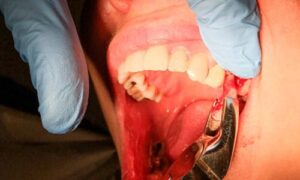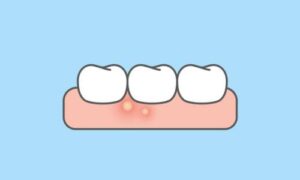Introduction
Enamel, the protective outer layer of our teeth, plays a crucial role in maintaining oral health. In dental care, fluoride has emerged as a key player in enamel protection and preventing decay. However, various factors, including poor dental hygiene and dietary choices, can lead to enamel erosion and compromise our dental well-being. In this article, we delve into the science behind fluoride and its role in safeguarding the enamel of your teeth.
Understanding Enamel: The Guardian of Your Teeth
Before we explore the protective effects of fluoride, it’s essential to understand the significance of enamel. Enamel is the hard outer layer of teeth that shields them from daily wear and tear, bacteria, and acids produced by plaque. Despite its resilience, enamel is not invincible, and exposure to acids and bacteria can lead to its erosion. This is where fluoride becomes a powerful ally in the battle against enamel deterioration.
The Enamel Protection Cycle: How Fluoride Works
Fluoride and Mineralization
One of the primary mechanisms through which fluoride protects enamel is by promoting remineralization. When our teeth are exposed to acids, minerals such as calcium and phosphate are leached from the enamel. Fluoride helps replenish these lost minerals, contributing to the remineralization process. This strengthens the enamel and makes it more resistant to future acid attacks.
Dental Plaque Disruption
Fluoride also interferes with the activities of harmful bacteria in dental plaque. These bacteria produce acids that can erode enamel over time. By disrupting the plaque’s ability to generate acid, fluoride acts as a preventive barrier, reducing the risk of enamel damage.
Investing in oral health prevention programs yields significant returns, with every $1 invested generating up to $5 in cost savings. (Source: World Health Organization)
Fluoride in Oral Care Products: Choosing Your Defense
Toothpaste: A Daily Dose of Protection
When it comes to enamel protection, your choice of toothpaste matters. Many toothpaste brands incorporate fluoride into their formulations specifically for its enamel-strengthening properties. Look for products that carry the American Dental Association (ADA) seal, ensuring they meet the organization’s standards for safety and efficacy.
Mouthwash and Fluoride Treatments
In addition to toothpaste, fluoride mouthwashes and professional fluoride treatments provided by dental professionals can further enhance enamel protection. These products deliver a concentrated dose of fluoride, offering an extra defence against enamel erosion.
Enamel Protection: Fluoride and Community Water Fluoridation
Community water fluoridation is a widespread practice that involves adjusting the fluoride levels in public water supplies. This public health initiative has proven to be a cost-effective way to provide systemic enamel protection to entire communities. Studies have consistently shown a reduction in tooth decay in areas with optimally fluoridated water.
Chronic gum disease affects nearly half of adults aged 30 and above, significantly impacting overall health and well-being. (Source: American Dental Association)
Best Ways to Enamel Protection
Ensuring the protection of enamel is vital for maintaining strong and healthy teeth. Here are some of the best ways to safeguard and fortify your enamel:
Brushing with Fluoride Toothpaste:
Choose a toothpaste that contains fluoride, a mineral renowned for its enamel-strengthening properties. Brush your teeth at least twice daily, especially after meals, to remove plaque and bacteria that can erode enamel.
Enamel Protection: Proper Brushing Technique
Use a soft-bristled toothbrush to avoid abrasive damage to the enamel. Brush gently in a circular motion, covering all surfaces of your teeth, including the front, back, and chewing surfaces.
Flossing Regularly:
Floss daily to remove plaque and debris between teeth and along the gumline where your toothbrush may not reach effectively. This helps prevent cavities and protects the enamel in hard-to-reach areas.
Balanced Diet:
Consume a well-balanced diet rich in vitamins and minerals, especially calcium and phosphorus, essential for enamel health. Limit the intake of acidic and sugary foods and beverages, as they can contribute to enamel erosion.
Drink Water and Chew Sugar-Free Gum:
Drink plenty of water throughout the day to help neutralize acids in the mouth and promote saliva production. Chewing sugar-free gum after meals can stimulate saliva flow, aiding in the remineralization of enamel.
Regular Dental Check-ups:
Schedule regular dental check-ups and cleanings to monitor the health of your enamel and address any emerging issues promptly. Professional dental cleanings help remove stubborn plaque and tartar that may contribute to enamel erosion.
Fluoride Mouthwash: Enamel Protection
Incorporate fluoride mouthwash into your oral care routine, especially if you are at a higher risk of developing cavities. Swishing with fluoride mouthwash can provide additional protection against enamel damage.
Avoid Teeth Grinding:
If you grind your teeth (bruxism), consider wearing a nightguard to prevent excessive wear and tear on your enamel. Addressing stress and anxiety, common causes of teeth grinding, can also contribute to enamel protection.
Quit Smoking and Limit Alcohol Intake:
Smoking and excessive alcohol consumption can contribute to enamel staining and erosion. Quitting smoking and moderating alcohol intake can positively impact enamel health.
Community Water Fluoridation:
If available in your area, consume tap water, as community water fluoridation is a proven method for enhancing enamel protection at a population level.
Remember that consistency is key when it comes to enamel protection. Incorporating these practices into your daily routine and maintaining regular dental visits can contribute to your enamel’s long-term health and resilience.
Conclusion: Enamel Protection
Understanding the science behind enamel protection is crucial to maintaining optimal oral health. Fluoride, with its remarkable ability to promote remineralization and disrupt the activities of enamel-damaging bacteria, stands as a stalwart defender of our teeth. From daily oral care products to community-wide water fluoridation efforts, incorporating fluoride into our routines plays a pivotal role in safeguarding the integrity of our enamel. So, the next time you reach for your toothbrush, remember that you’re not just cleaning your teeth – you’re actively defending the fortress that is your enamel, ensuring a brighter, healthier smile for years to come.
Frequently Asked Questions (FAQs) About Enamel Protection and Fluoride:
Q1: What is enamel, and why is it important?
A1: Enamel is the hard outer layer of our teeth that protects them from daily wear and tear, bacteria, and acids. It plays a crucial role in maintaining dental health as a barrier against decay.
Q2: How does fluoride protect enamel?
A2: Fluoride protects enamel through two main mechanisms: promoting remineralization by replenishing lost minerals and disrupting the activities of bacteria in dental plaque that produce acids, reducing the risk of enamel erosion.
Q3: How often should I brush my teeth to protect enamel?
A3: Brushing your teeth at least twice daily, especially after meals, is recommended. Using fluoride toothpaste and adopting proper brushing techniques contribute to effective enamel protection.
Q4: Can I get enough fluoride from toothpaste alone?
A4: While fluoride toothpaste is a valuable source of enamel protection, additional fluoride from drinking water and professional dental treatments can enhance its effectiveness. Be mindful of the fluoride content in your toothpaste and consider other sources for optimal protection.
Q5: Are there specific foods that help protect enamel?
A5: A balanced diet rich in calcium and phosphorus contributes to enamel health. Dairy products, leafy greens, and nuts support enamel protection. Limiting acidic and sugary foods also helps prevent enamel erosion.
Q6: How does community water fluoridation work?
A6: Community water fluoridation involves adjusting the fluoride levels in public water supplies to an optimal concentration. This practice has been proven to reduce tooth decay community-wide, providing systemic enamel protection.
Q7: Can I reverse enamel erosion?
A7: In the early stages of enamel erosion, remineralization can occur with the help of fluoride. However, advanced cases may require dental interventions such as bonding or crowns. Regular dental check-ups can detect and address enamel issues early.
Q8: Is fluoride safe for everyone?
A8: Fluoride is generally safe when used as directed. However, excessive fluoride intake, known as fluorosis, can cause cosmetic dental issues. It’s important to follow recommended guidelines and consult your dentist about fluoride use, especially for children.














